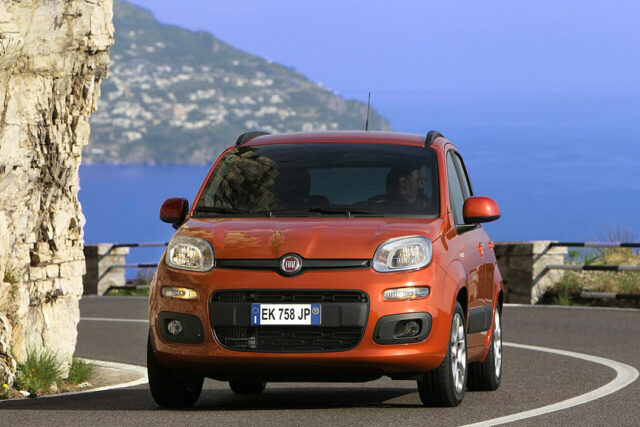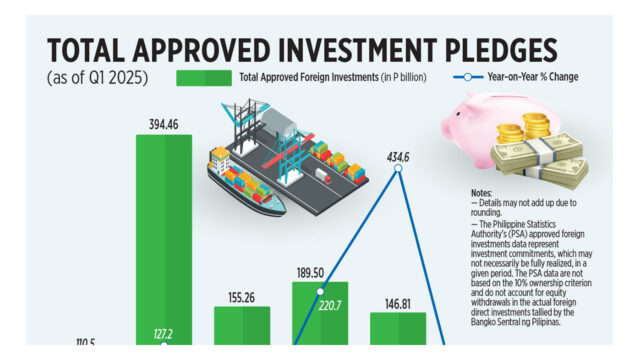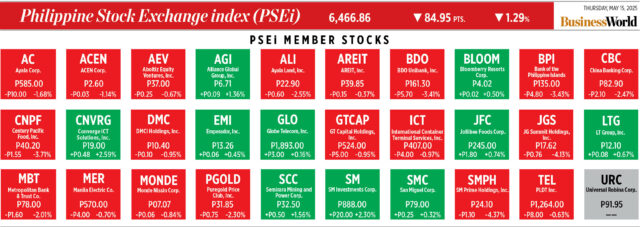Your car shouldn’t look like it pumped iron at the gym
By Chris Bryant
SMALLER CARS are an obvious fix for crowded cities, limited resources and a warming planet. Yet they’ve become an endangered species, as tougher regulations made them uneconomical to produce and we gravitated towards muscular SUVs.
A continent that built iconic, utilitarian, and wildly popular city cars, like the Fiat Cinquecento and Mini in the 1950s, needs to make tiny cars appealing and affordable again. Smarter rulemaking and financial incentives can help.
In Europe, the market share of small “A-segment” cars (like the Fiat Panda and Hyundai i10) has shrunk to the lowest in at least 20 years, according to figures shared with Bloomberg Opinion by data provider JATO Dynamics.
Automakers axed their smallest vehicles to protect profit margins and focused on larger, heavier, and more expensive models, thereby denying their youngest and elderly clients a new ride.
In the birthplace of autos, Germany, the average cost of a new car has soared to around €57,000 (more than the average gross income); prices in Italy, Spain, and France aren’t far behind.
Larger, more expensive cars are partly a consequence of stricter safety and pollution rules, and hence all the technology modern vehicles must contain. (The number of people killed in road traffic accidents fell 16% in the past decade, so tougher regulation has also been beneficial.)
And of course, they’re also a result of the trend for high-riding SUVs, which now account for more than half of European car sales; this has created a vicious cycle whereby car buyers worried about the consequences of colliding with an SUV buy one to protect themselves.
For readers in the US, where a variety of ill-conceived fuel economy and tax incentives spurred the rise of gargantuan pickup trucks, the notion that Europe’s cars are oversized must seem quaint.
But the upshot of bigger, pricier wheels is a shrinking market: Just 13 million new vehicles of all sizes were registered across the European Union, the UK, Switzerland, and Norway in 2024, or around 3 million fewer than prior to the pandemic.
Manufacturers have threatened to close car plants or have outsourced production to less expensive countries; meanwhile, consumers who can’t afford a new vehicle are making do with an older, dirtier one, hampering the goal of reducing emissions. The average age of vehicles on the EU’s roads has risen to 12.5 years.
Speaking to French newspaper Le Figaro last week, Renault SA Chief Executive Officer Luca de Meo made a worthwhile suggestion to revive Europe’s car market: less onerous regulation for small vehicles.
“There are too many rules designed for larger and more expensive cars, which does not allow us to make small cars under acceptable profitability conditions,” he said.
“Is lane-departure warning absolutely necessary in cars that spend 95% of their time in the city?” De Meo asked. He was referring to the so-called GSR-2 standards, a package of measures that came into force last year, mandating features like autonomous emergency braking and speed warnings in all new vehicles. These require sensors and on-board cameras that further inflate the cost of building a car.
De Meo also bemoaned how in crash tests compact models also have “to react like a high-end sedan with a hood three times longer.”
I’m wary of the safety implications of a regulatory carveout but his idea shouldn’t be dismissed out of hand.*
Europe already has less onerous rules for so-called quadricycles like the Citroën Ami and Fiat Topolino whose speed is limited to 45 km/hour; both cost less than €10,000.
In Japan so-called kei cars that have a maximum 3.4 meter length, small engines, and weigh only a few hundred kilos account for almost 40% of new sales.
Their success is explained by a variety of purchasing, maintenance, and parking incentives, but in case you’re wondering, these diminutive vehicles are also surprisingly safe and fun to drive.
Establishing another regulatory category in Europe would likely be time-consuming, but there’s no reason why Europe shouldn’t consider similar financial incentives for buyers of small cars or penalize those who opt for a large SUV, or both.
France has introduced weight-adjusted car taxes and parking charges, for example. Revising carbon-pollution targets to better reflect lifecycle emissions (in other words, including those generated in manufacturing and recycling) would also drive uptake of smaller cars.
From a consumer standpoint, it’s regrettable that Europe’s tariffs on Chinese EVs have stifled a potential source of cheap imports.
So it’s imperative European automakers find efficiencies and sell vehicles consumers can afford — if necessary by cooperating with Chinese manufacturers or seeking outside software expertise, as Stellantis NV and Volkswagen AG have done.
Batteries are getting cheaper, and these efforts are beginning to bear fruit. The Renault 5 E-Tech, which costs around €25,000 for the basic version, is a great example of the affordable yet stylish vehicles Europe needs (albeit as part of the slightly larger B-segment).
There’s even a 540hp “mini-supercar,” the Renault 5 Turbo 3E costing €155,000, which deep-pocketed owners are encouraged to customize to the max.
Smaller and much cheaper EVs are in the offing, including the Renault Twingo E-Tech and VW ID. Every1, which are expected to cost less than €20,000 when they go on sale in 2026 and 2027, respectively. Both will be produced in Europe.
In other words, small cars look poised for a comeback. But they might need a push.
BLOOMBERG OPINION
*See this study for how such a new regulatory category might be designed — https://www.gerpisa.org/system/files/acte_43_gerpisa_0.pdf














